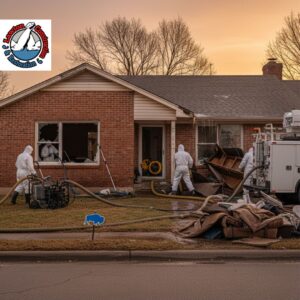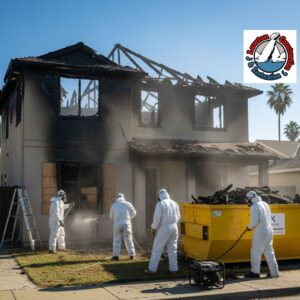Lead-Free Living: Breaking Down the Essential Lead Abatement Process

Table of Contents
Introduction
Is your home truly safe from hidden dangers? Many homeowners assume that if their walls look clean and their paint isn’t peeling, there’s little to worry about. But when it comes to lead hazards, what you can’t see might pose the greatest risk. Lead exposure—especially from old paint, dust, or soil—can have long-lasting health effects, particularly on young children and pregnant women.
If you’re wondering what it really takes to eliminate these threats and create a healthier living environment, you’re in the right place. The essential lead abatement process isn’t just about scraping paint—it’s a comprehensive, legally guided journey that involves identifying risks, applying the right solutions, and ensuring your space remains safe long after the work is done.
In this blog, we’ll break down the lead abatement process steps in clear, practical terms. Whether you’re tackling a renovation in an older home, managing a residential lead abatement process in California, or simply seeking peace of mind, understanding the full picture empowers you to make informed, safe decisions.
Let’s explore how the lead hazard reduction process works, why it matters, and what every homeowner needs to know to confidently move toward a lead-free living environment.
1. Understanding Lead Hazards in the Home
Have you ever stopped to think about what’s lurking beneath the surface of your walls, windows, or floors—especially if you live in a home built before 1978? If lead-based paint was ever used, you could be living with a silent hazard: lead exposure. And the danger doesn’t always announce itself with peeling paint or visible dust.
What Makes Lead So Dangerous?
Lead is a toxic metal that, when ingested or inhaled in the form of dust or chips, can cause serious health issues—especially in children. The most alarming part? It often accumulates in the body over time, with symptoms appearing only after long-term exposure.
Health effects of lead exposure include:
- Developmental delays and learning difficulties in children
- Neurological damage and behavioral issues
- Increased risk of high blood pressure and kidney damage in adults
- Pregnancy complications and harm to unborn children

When you consider the potential consequences, it’s clear why a proper lead hazard identification process is essential for any homeowner, especially in older properties.
Where Is Lead Commonly Found in Homes?
Even if your space looks clean, lead could be hiding in:
- Cracking or chipping lead-based paint on walls, doors, and windows
- Contaminated dust on floors or sills
- Soil near your home’s foundation
- Old plumbing fixtures containing lead solder or pipes
If you’re based in California, understanding the residential lead abatement process California requires is particularly important. State-specific regulations ensure that lead hazard reduction processes follow strict safety and compliance standards.
Why You Shouldn’t Wait to Take Action
Still wondering if it’s worth investigating? Ask yourself:
- Was my home built before 1978?
- Have I recently renovated or disturbed painted surfaces?
- Are there young children or pregnant women living in the home?
If you answered “yes” to any of these, it’s time to prioritize a lead hazard identification assessment.
Taking these proactive steps can help you:
- Prevent costly health consequences
- Stay compliant with local and federal regulations
- Preserve the safety and value of your home
Addressing lead hazards early on lays the groundwork for a safer, healthier home—and peace of mind. In the next section, we’ll walk through the step-by-step lead abatement process so you know exactly what to expect.
2. Key Steps in the Lead Abatement Process
So, you’ve discovered your home may contain lead—and now you’re asking, “What’s next?” Knowing you need to act is one thing. Understanding how to act is another. That’s where the lead abatement process steps come in. When followed properly, these steps ensure your home is not only safer—but legally compliant and future-proofed against recurring lead hazards.
Let’s break down the step-by-step lead abatement approach so you feel confident, not confused, as you move forward.
Step 1: Lead Inspection and Risk Assessment
Before any tools come out or surfaces are disturbed, a certified lead professional will assess your property. This isn’t just guesswork—it’s a data-driven, room-by-room evaluation to identify hazards.
What happens during this phase?
- Surface-by-surface inspection to find deteriorated paint
- Soil and dust sampling to test for hidden lead particles
- A detailed risk assessment report outlining the level and location of lead presence
This foundation ensures the rest of your lead-safe abatement process is accurate, efficient, and compliant.
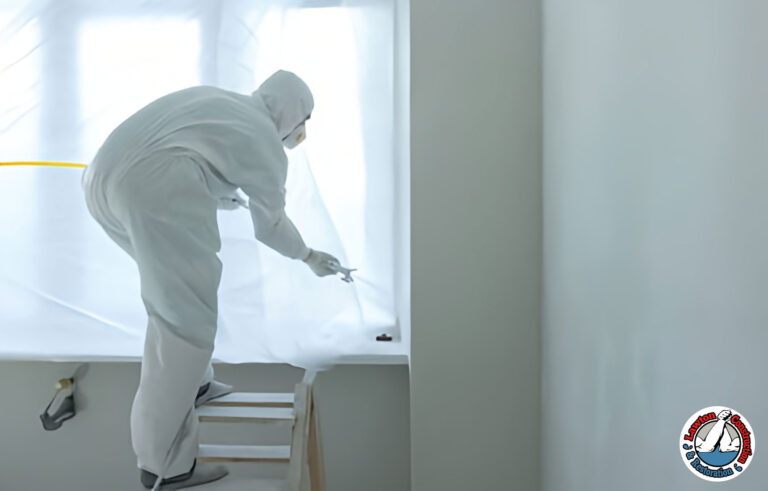
Step 2: Planning and Permits
Once the assessment is complete, it’s time to plan. A licensed contractor will determine the best lead hazard reduction process for your home based on the findings. If you’re in California, certain permits and local reporting may be required, so make sure your contractor is familiar with compliant lead abatement methods in your state.
The plan includes:
- Choosing between removal, encapsulation, or paint stabilization
- Creating a project timeline and budget
- Coordinating any temporary relocation, especially if young children or pregnant individuals are involved
Step 3: Containment and Safety Setup
Before work begins, it’s crucial to contain the area to prevent the spread of hazardous dust. Think of this as building a bubble around the workspace.
Effective containment includes:
- Sealing off rooms with plastic sheeting
- Using HEPA-filtered vacuums and air scrubbers
- Setting up a decontamination zone for workers
This is where the containment setup lead abatement strategy plays a vital role in keeping your home safe during the process.
Step 4: Lead Paint Removal or Stabilization
Here’s where the real work begins. Depending on your chosen strategy, your contractor will either:
- Physically remove lead-based materials from affected areas (doors, trim, windows)
- Encapsulate the lead paint, covering it with a special sealant to prevent exposure
- Stabilize paint, repairing damaged areas to keep them intact and non-hazardous
Each approach must follow safe lead abatement practices, ensuring dust control and minimal disruption.
Step 5: Post-Abatement Cleanup and Clearance Testing
The work isn’t done until your home passes lead clearance testing. After removal or stabilization:
- Surfaces are thoroughly cleaned using specialized methods
- Dust samples are taken to confirm the space is free of hazardous particles
- A certified inspector provides clearance so your home is officially lead-safe
This is the final and critical checkpoint in the lead paint removal process—and the one that gives you full peace of mind.
By understanding and following this essential lead abatement process, you’re doing more than ticking boxes. You’re creating a healthier home environment for everyone inside. Up next, we’ll explore the rules and regulations that guide these steps—especially if you’re navigating this process in California.
3. Regulatory Standards and Compliance
You may be wondering—is lead abatement just about getting rid of lead, or are there legal steps I need to follow too? The answer: absolutely yes. Lead abatement isn’t just a technical job—it’s a regulated process governed by strict rules to protect you, your family, and the workers involved. Ignoring these regulations can lead to failed inspections, health risks, and even fines.
Whether you’re a homeowner tackling your first project or a property manager handling multiple units, understanding the compliant lead abatement methods required by law is essential.
Federal and State Regulations: What You Need to Know
At the national level, the EPA (Environmental Protection Agency) and HUD (Department of Housing and Urban Development) set the baseline for safe and effective lead abatement. However, if you’re in California, there are state-specific laws that raise the bar even higher.
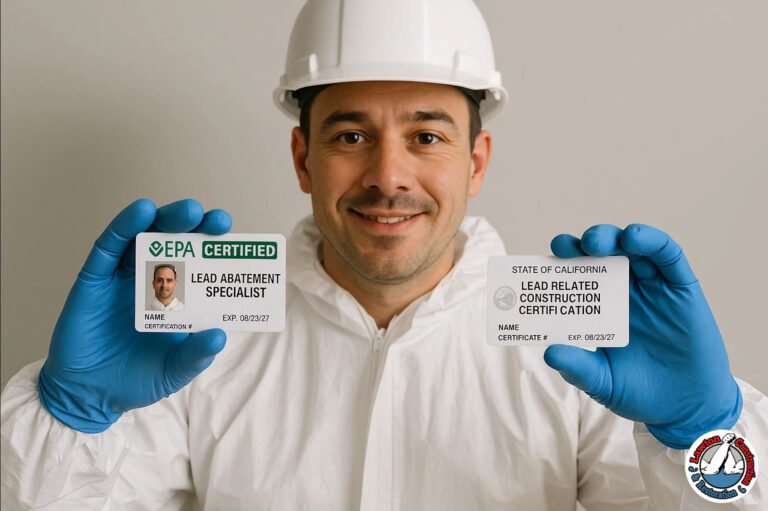
Here are some key legal standards that apply:
- EPA’s Renovation, Repair and Painting (RRP) Rule: Requires certification for any firm disturbing lead-based paint in pre-1978 buildings.
- California’s Title 17 Regulations: These govern the legal lead abatement procedures California mandates, from worker certification to recordkeeping.
- Lead Disclosure Laws: Homeowners and landlords must disclose known lead hazards before renting or selling a property.
Certified Professionals Are Non-Negotiable
If you’re hiring help, make sure they’re not just experienced—they must be trained lead abatement professionals with state-approved credentials.
Why does certification matter?
- It ensures safe and compliant lead abatement methods are followed.
- Certified contractors are trained in containment, removal, and disposal best practices.
- It protects your legal liability as a homeowner or landlord.
Always ask to see certifications, and verify credentials through the California Department of Public Health (CDPH) if needed.
The Role of Lead Clearance Testing
Even after all visible signs of lead are gone, one step remains: lead clearance testing. This isn’t just a formality—it’s required to confirm your home is truly safe.
During this phase:
- Dust wipe samples are taken from floors, sills, and other surfaces.
- A third-party inspector ensures your property meets state safety thresholds.
- A written clearance report is issued, often required before reoccupancy.
This testing is one of the most critical parts of the lead abatement process steps, especially if you’re planning to rent or sell the property.
Responsible Waste Disposal in California
Lead abatement doesn’t end at the jobsite—it extends to what happens after materials are removed. In California, specific laws govern the lead waste disposal process, including how it’s packaged, transported, and tracked.
You’re responsible for ensuring:
- Debris is properly bagged and labeled
- A licensed hauler handles proper lead waste transport California regulations require
- Documentation is retained in case of audits or property inspections
Improper disposal can lead to environmental damage—and legal consequences.
Staying Ahead of Compliance = Peace of Mind
It might seem like a lot, but understanding these regulations is part of creating a safer, smarter abatement plan. By following legal lead abatement procedures California enforces and working with certified professionals, you’re not just following the rules—you’re protecting your family and community.
In the next section, we’ll explore how professional services bring value, expertise, and long-term peace of mind to your lead abatement journey.
4. Benefits of Professional Lead Abatement Services
You might be asking yourself, “Can’t I just handle lead abatement myself?” While that’s a common thought—especially for hands-on homeowners—the truth is, lead abatement is not a typical DIY project. From the dangers of airborne lead dust to the legal complexities involved, there’s a lot at stake. That’s why bringing in trained lead abatement professionals is not just recommended—it’s essential.
Let’s explore the value of going pro, and why it pays off both short- and long-term.
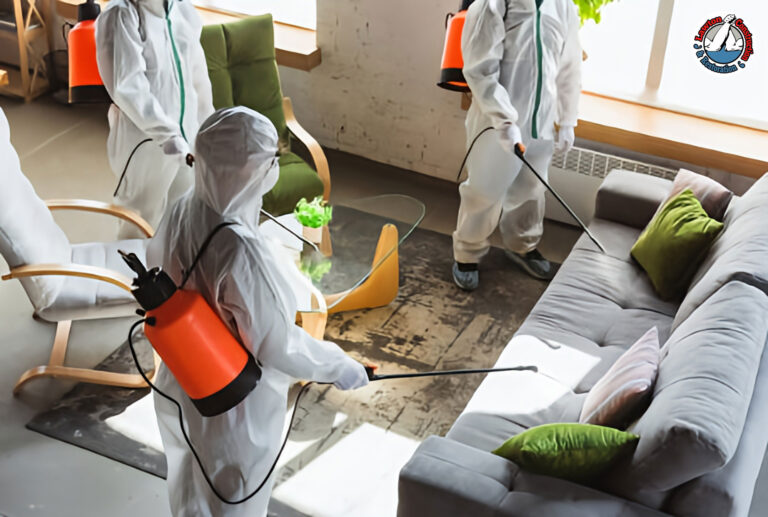
Why Experience and Certification Matter
When you hire expert lead abatement professionals, you’re not just paying for labor—you’re investing in peace of mind. Certified contractors are trained to follow every protocol with precision, using safe lead abatement practices that protect your family, neighbors, and the environment.
Benefits of hiring professionals include:
- Deep understanding of compliant lead abatement methods
- Access to advanced tools and protective equipment
- Familiarity with permit requirements and documentation
- Minimizing liability and avoiding costly fines
They’ve been through rigorous training, understand current codes, and know how to handle surprises without compromising safety or compliance.
A Smoother, Safer Process from Start to Finish
From planning to cleanup, a professional lead abatement procedure runs like a well-oiled machine. That means:
- Clear risk assessments and tailored remediation plans
- Proper containment to control lead dust and debris
- Precision in removal, encapsulation, or stabilization work
- Detailed post-abatement cleaning and clearance testing
No guesswork. No shortcuts. Just a thorough, expert lead abatement process that leaves your space truly lead-safe.
Residential, Commercial, and Beyond
Whether you’re tackling a historic home, a multi-unit property, or a public facility, certified professionals are equipped for it all. In California especially, commercial lead abatement procedure California standards are stricter than in many other states.
Professionals are trained to handle:
- Residential lead abatement process California regulations
- Schools and daycare centers where child safety is critical
- Older commercial buildings undergoing renovation or repurposing
By hiring the right team, you ensure every project—regardless of scale—is compliant, efficient, and safe for reentry.
Protecting Your Investment (and Your Health)
Lead abatement done right isn’t just about avoiding risk—it also adds value. Properties that undergo a full lead remediation process are more marketable and often see higher resale value, especially as buyers become more health-conscious.
Think of it this way:
- You’re protecting your family’s health
- You’re preserving your property’s integrity
- You’re ensuring your investment is future-ready
Ready to Bring in the Experts?
Attempting a project of this magnitude without the right training could cost more in the long run—financially, legally, and personally. Trusting trained lead abatement professionals ensures your job is done right, the first time.
Next, we’ll shift focus to proactive strategies—because once the lead is gone, keeping it that way is just as important.
5. Preventative Measures to Maintain a Lead-Free Environment
So your lead abatement project is complete—congrats! That’s a huge step toward safeguarding your home and your health. But here’s the thing: staying lead-free isn’t a one-and-done deal. Without consistent maintenance and awareness, even the cleanest property can reintroduce hazards over time.
That’s why adopting a proactive mindset and integrating smart prevention practices is key to preserving a lead-safe abatement process for the long haul.
Why Prevention Is Just as Important as Abatement
You’ve gone through the effort (and investment) of proper abatement. So naturally, you want to make sure that safety lasts. Lead particles can reappear due to aging materials, renovation work, or soil contamination—especially in older homes.
The good news? A few smart habits can help prevent recontamination and support a comprehensive lead abatement process that endures.
Simple, Effective Prevention Strategies
To maintain a healthy indoor environment, make these steps part of your ongoing home care plan:
- Perform Routine Visual Inspections
Look out for chipping, peeling, or cracking paint—especially around windows, doors, and baseboards. Catching deterioration early can prevent the need for costly remediation later. - Keep Surfaces Clean and Dust-Free
Regularly damp-mop floors and wipe down sills using HEPA-filtered vacuums and microfiber cloths. This controls lead dust containment, especially in high-traffic areas. - Avoid Disturbing Old Paint Without Precaution
Planning a home project? If it involves sanding, cutting, or drilling, consult a lead-safe contractor first to avoid accidentally releasing particles. - Maintain Painted Surfaces and Seal Exposed Areas
Apply touch-up paint or sealants as needed to keep surfaces intact and prevent future deterioration. This is part of a strong lead paint stabilization procedure.
Monitor Soil and Outdoor Play Areas
Soil near old buildings may contain lead. Lay down mulch or sod in play areas and avoid planting food near foundations.
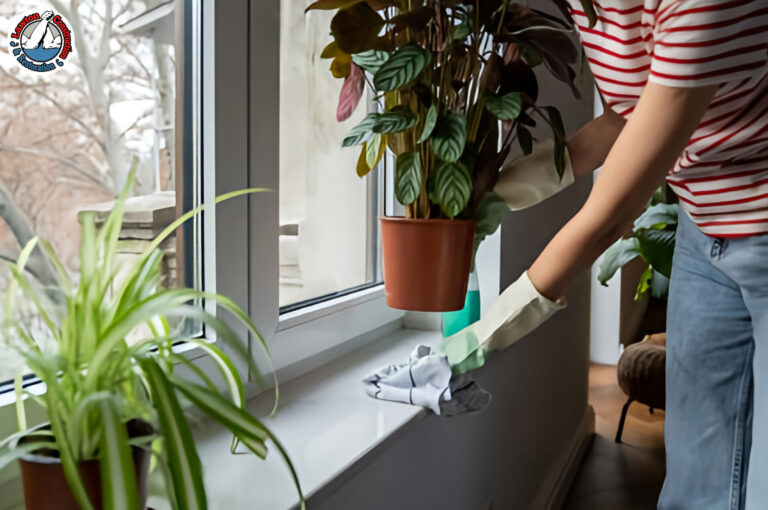
For Landlords and Property Managers: Stay Ahead of Compliance
Managing multiple units or properties? Take a phased lead abatement approach by prioritizing high-risk areas and scheduling regular inspections. This not only supports tenant safety but also helps you comply with evolving housing regulations.
A solid lead abatement project flow ensures:
- Documented maintenance and inspection schedules
- Timely repairs based on inspection findings
- Continued compliance with local housing codes
Education Is a Powerful Preventative Tool
Sometimes the best defense is knowledge. Make sure everyone in the household—or on your maintenance team—is aware of how lead hazards arise and what signs to watch for.
Helpful actions include:
- Posting reminders about safe cleaning methods
- Training staff on identifying potential hazards
- Providing tenants with lead safety brochures or resources
Stay Safe, Stay Lead-Free
Maintaining a lead-free environment isn’t difficult—it just requires consistency, care, and attention to detail. With smart habits and a little planning, you’ll ensure that your lead-safe abatement process holds strong for years to come.
In the final section, we’ll wrap up everything we’ve covered and help you take the next step toward a healthier, lead-free future.
Conclusion: Taking the Next Step Toward Lead-Free Living
Now that you’ve explored the full scope of the essential lead abatement process, what’s your next move? Whether you’re just beginning your journey or you’ve already completed a step-by-step lead abatement project, one truth remains: protecting your space from lead is an ongoing commitment—and one worth making.

Ask yourself:
- Have you had your home thoroughly inspected?
- Are you confident in the long-term safety of your environment?
- Do you know who to call if lead concerns arise in the future?
If the answer is “not yet” or “I’m not sure,” don’t worry—you’re not alone. Many homeowners and property managers face the same uncertainties. But the good news is, with the right knowledge and guidance, you’re fully equipped to take control.
Working with trained lead abatement professionals ensures every phase—from risk assessment to final lead clearance testing—is handled with care, compliance, and precision. It’s not just about removing paint—it’s about creating a healthier, safer space for the people who matter most to you.
And if you’re in California, staying aligned with legal lead abatement procedures California requires isn’t just a good idea—it’s the law. The right team can help you navigate the nuances, follow the lead-safe abatement process, and keep your property in full compliance.
Here’s your takeaway:
A lead-free home isn’t just a goal—it’s a lasting investment in your family’s well-being, your property’s value, and your peace of mind. By staying informed, choosing certified experts, and practicing prevention, you’re not just reacting to a problem—you’re building a legacy of health and safety.
Ready to move forward? Your lead-free future starts now.

